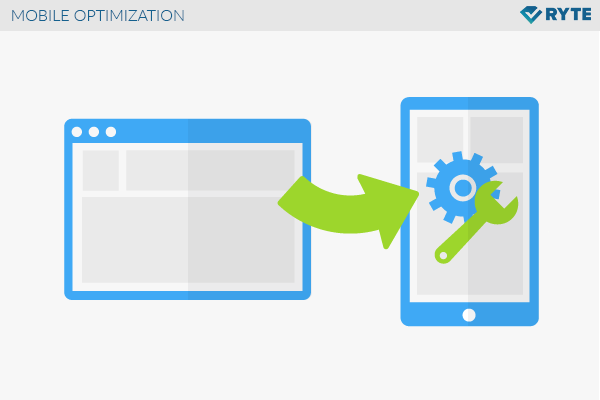
The Ultimate Guide to Mobile Optimization: Approaches for Enhancing Web Site Efficiency on Smartphones and Tablets
The approaches for enhancing site performance on mobile systems go beyond mere adjustment; they incorporate a detailed method that includes receptive style, rate optimization, content strategies, and individual experience improvements. By delving right into the complexities of mobile optimization, businesses can not just fulfill customer assumptions but also stay ahead in a competitive digital landscape.
Relevance of Mobile Optimization
Mobile optimization plays a critical duty in improving customer experience and driving conversion rates in the ever-evolving electronic landscape. With the raising usage of smart devices and tablets for searching the web, making certain that web sites are optimized for mobile gadgets has ended up being imperative for services - Mobile Optimization. A mobile-optimized internet site not just adjusts effortlessly to various display sizes but additionally loads promptly, providing customers with a smooth and enjoyable surfing experience
In today's hectic world, customers anticipate instantaneous accessibility to details on the move. A site that is not enhanced for smart phones risks shedding possible consumers because of slow packing times or an inadequate interface. By purchasing mobile optimization, businesses can deal with the needs of their mobile target market, resulting in higher involvement and boosted conversions.
Furthermore, internet search engine like Google focus on mobile-friendly web sites in their rankings, making mobile optimization vital for boosting visibility and attracting organic web traffic. Mobile Optimization. Overall, the value of mobile optimization can not be overemphasized, as it straight influences user satisfaction, conversion rates, and overall company success in the electronic world
Responsive Design Strategies
Executing responsive design techniques makes certain that web sites dynamically change their format and material based on the individual's gadget display dimension, providing a regular individual experience across different systems. One of the most common approaches used in receptive style is developing fluid grids that allow material to resize proportionally to the screen dimension. This makes sure that elements on the web page keep their family member spacing and plan, enhancing the viewing experience for users on different tools.
Furthermore, utilizing adaptable images that can scale with the dimension of the viewport aids prevent images from being cropped or distorted on smaller sized displays. CSS media inquiries play an important role in responsive design by enabling designers to use particular styles based upon the tool qualities such as screen width, height, and alignment. By leveraging media queries, websites can adapt their design and layout to match smartphones, tablet computers, and desktop computer displays effortlessly.
Including receptive layout strategies not only enhances individual experience yet likewise adds to improved search engine rankings, as online search engine like Google focus on mobile-friendly websites in their mobile search results page. By accepting responsive design, internet sites can satisfy the varied needs of sites users accessing content on a variety of devices, ultimately driving interaction and conversions.
Rate and Efficiency Optimization

One trick method is maximizing photos and multimedia material to lower documents sizes without jeopardizing quality. Compressing photos, leveraging modern image layouts like WebP, and lazy loading offscreen pictures work techniques to accelerate load times (Mobile Optimization). Furthermore, minimizing HTTP demands, leveraging browser caching, and minimizing web server action times are important action in improving efficiency.
Executing a web content shipment network (CDN) can additionally substantially boost internet site rate by dispersing content across several servers internationally, decreasing latency for individuals accessing the site from different locations. Focusing on crucial above-the-fold web content and postponing non-essential scripts can further boost regarded efficiency. By focusing on speed and performance optimization, web sites can supply a from this source smooth and gratifying customer experience on mobile phones.
Mobile-Friendly Content Techniques
Mobile-friendly content techniques involve customizing the discussion of information to suit the smaller displays and on-the-go nature of smartphone and tablet users. Additionally, damaging up material into much shorter paragraphs and making use of bullet points can help boost readability and make it much easier for users to take in info swiftly.
Integrating engaging visuals, such as images and video clips maximized for mobile watching, can also boost the total user experience. These visuals need to be pertinent, high-grade, and load promptly to stop customers from wearying. In addition, integrating interactive aspects like quizzes, polls, or studies can boost individual engagement and urge energetic involvement.
Customer Experience Enhancements
Structure on the structure of mobile-friendly material approaches, improving user experience requires maximizing every touchpoint to make certain smooth communication and complete satisfaction for mobile individuals. One important facet of enhancing customer experience on mobile devices is making certain fast packing times.
Optimizing forms for mobile users by minimizing the number of areas and utilizing auto-fill features can also improve the general customer experience. By concentrating on these individual experience improvements, sites can successfully engage and retain mobile visitors.
Verdict
Finally, mobile optimization is critical for boosting site performance on read this post here smartphones and tablet computers. By executing receptive layout techniques, maximizing rate and performance, developing mobile-friendly content, and enhancing user experience, services can properly get to and involve with their mobile audience. It is crucial for websites to adapt to the boosting mobile usage fads in order to continue to be affordable in the digital landscape.